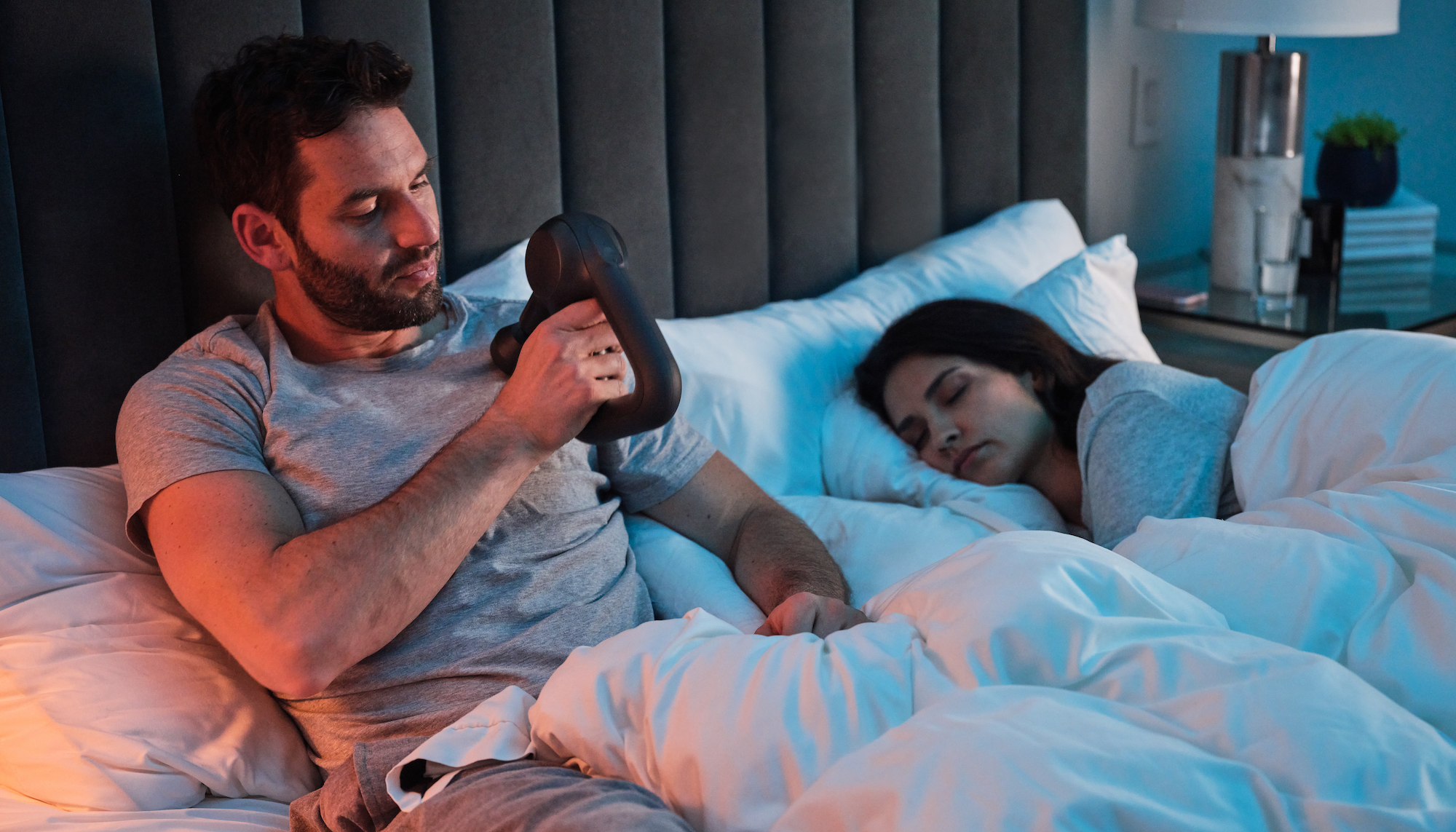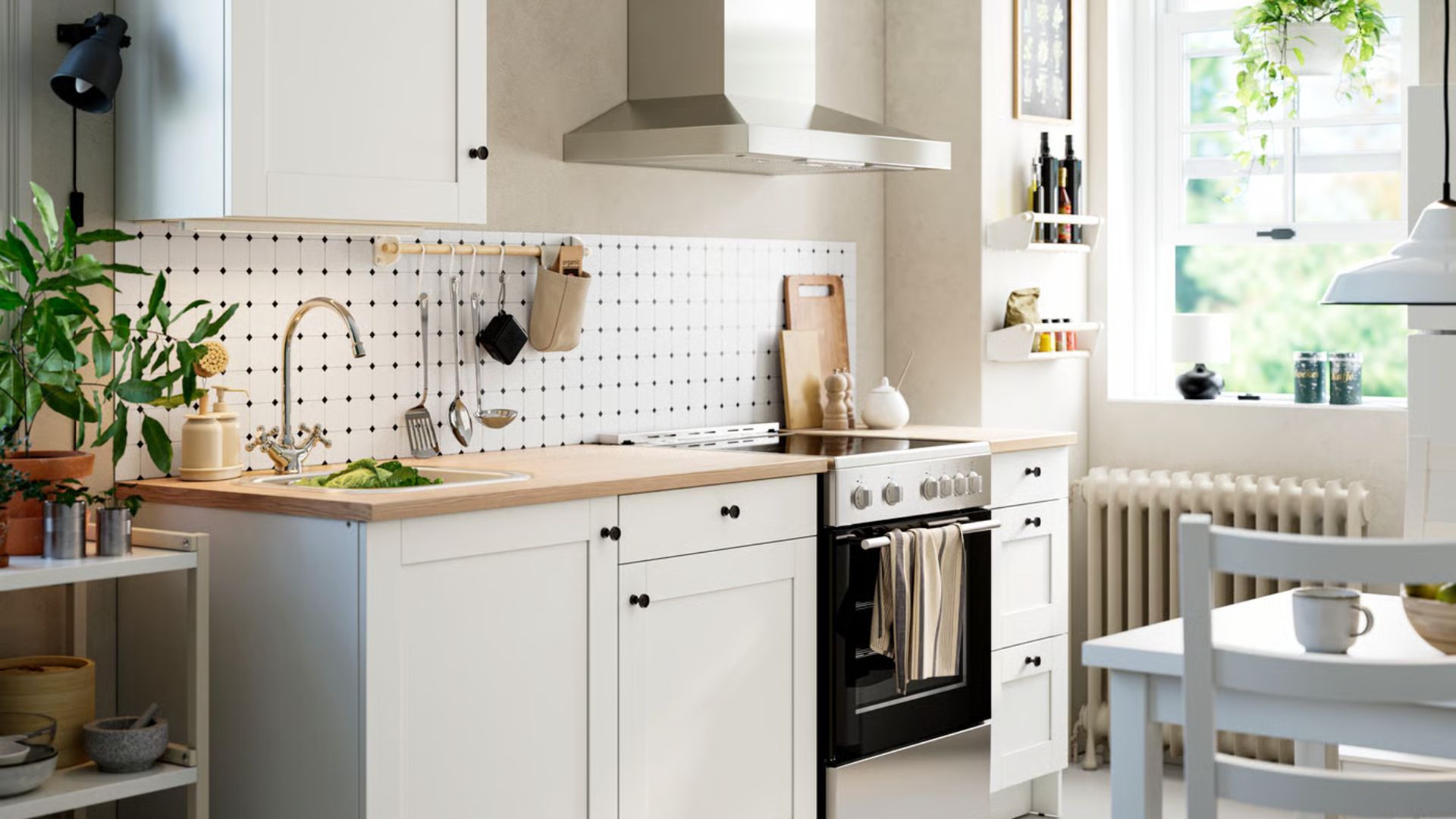I tried using a massage gun for a week at bedtime — here’s what happened

Massage guns are often regarded as both a pre- and post-workout necessity. But did you know that massage gun usage could help you sleep better as well? The best massage guns use fast, percussive motion through foam attachments to penetrate deep into muscle tissue, promoting increased blood flow, relaxation of overused muscle fibers, and improved joint range of motion — essential components for an efficient and injury-free exercise routine.
These components are also vital for a good night’s rest. According to a recent study by Therabody that followed 73 active adults, using a massage gun prior to bedtime can decrease sleep latency (the time it takes to fall asleep) and increase sleep efficiency (staying asleep longer between disturbances). The study’s participants also saw enhancements in vascular function and heart rate variability and a decline in overall soreness and discomfort.
As a light sleeper with lots of chronic aches and pains, I’d be willing to try just about anything to improve my poor sleep patterns. Since meditation and melatonin have failed me, I set out to see if Therabody’s “Sleep: Therabody x Ōura” program could vastly improve the quality of my shut-eye. Read on to find out what happened.
What is Sleep: Therabody x Ōura?

It’s no secret that I’m a huge fan of Therabody’s massage gun line, having reviewed the Theragun Mini, Theragun Elite, and Theragun Pro very favorably in the past. With the exception of the Mini, all Theragun models can connect via Bluetooth to the Therabody app which features sport-specific warm-ups and cool downs, treatments for common ailments, and general wellness routines. The Therabody app automatically sets your Theragun to the appropriate speed, indicates when you’re using an optimal amount of pressure, and displays a timed countdown for each treated area. It takes all of the guesswork out of owning a massage gun.
“Sleep: Therabody x Ōura” is one of Therabody’s newest in-app programs, developed in partnership with smart ring brand Oura. It’s a quick six-minute routine that should be performed half an hour before hitting the sack, with a focus on muscle groups that tend to be especially tense by the end of the day. The program starts by treating the bottoms of the feet for 30 seconds, then moves to each calf for 15 seconds, each quadricep for 30 seconds, each glute for 30 seconds, the left and right sides of the upper back for 15 seconds, each forearm’s extensors and flexors for 15 seconds, and then ends with the left and right upper trapezius for 30 seconds.
I used my Theragun Elite for the program, but any massage gun will work — even if it’s not a Theragun (you just won’t be able to connect to the Therabody app). I don’t own an Oura ring, so I relied on my Apple Watch Series 5 (check out the best Apple Watches on the market here) to measure my sleep metrics and heart rate variability (HRV). As recommended, I completed the routine about 30 minutes before tucking in for a full week.
I tried using a massage gun at bedtime — here’s what happened
To find out more, I committed to using my massage gun every evening for a week. Here's what happened.
Get instant access to breaking news, the hottest reviews, great deals and helpful tips.
I fell asleep faster
As a devotee of The Office (American version, sorry Brits), I usually rely on the dulcet tones of Michael Scott to lull me into slumber. It’s often that I make it well into the middle of a Jim and Pam storyline before I finally drift off to sleep.
After a few days of pre-bedtime massage gun usage, I started to conk out before the opening credits. This was the biggest and most drastic change I noticed, and one that was beneficial enough to keep the massage gun routine as a nightly habit. There were outliers of course (one night I had to start a second episode), but overall, using a massage gun at bedtime helped me to fall asleep much faster than usual.
I spent more time in “light” sleep
Sleep happens in four stages: awake, light, deep, and REM (or Rapid Eye Movement). Initially I had predicted that using a massage gun at bedtime would increase time spent in deep sleep, if anything — it’s in deep sleep where muscle repair and growth takes place, and blood flow to muscle tissues increases.
Looking at my sleep data though, I realized that I got around 30 more minutes in light sleep each night (referred to as “core” sleep in Apple’s Health app). Those extra 30 minutes seemed to come mostly from my time spent awake, so I’m not complaining.
I woke up with less back pain
Thanks to several slipped and bulging discs, waking up in the morning usually comes with its fair share of lower back pain. I’ve gotten relatively used to it at this point, so I naturally spend the first few hours of consciousness walking around gingerly.
It took me until the end of the week to realize that my stiff and sore back felt unusually limber in the mornings, and picking things up from the floor resulted in a lot less wincing than normal. I wouldn’t go so far as to say I was pain-free, but my typical symptoms were definitely reduced.
My HRV improved — but only slightly
HRV is the variation in time, measured in milliseconds, between your heartbeats. A higher HRV compared to your baseline generally indicates a good balance between your sympathetic (“fight or flight”) and parasympathetic (“rest and digest”) nervous system responses, which equates to higher overall fitness levels, better sleep quality, and efficient recovery.
My HRV numbers trended higher during my week of nightly massage gun usage, but the difference wasn’t what I’d call staggering — I saw about a 3-4 millisecond increase per day. Still, any improvement in HRV is welcome.
Want to give the challenge a go for yourself? Check out the best massage guns on the market here. Plus, check out our Theragun Pro vs Theragun Elite face-off here.

Jennifer Rizzuto is a freelance writer and certified personal trainer based in Long Island, NY. She covers various fitness-related topics and reviews for Tom's Guide. She also writes sketch comedy and short films, and performs frequently as an actor, singer, and improviser. When she's not writing, working out, or performing, you'll find her trying to convince her husband to get a dog.
